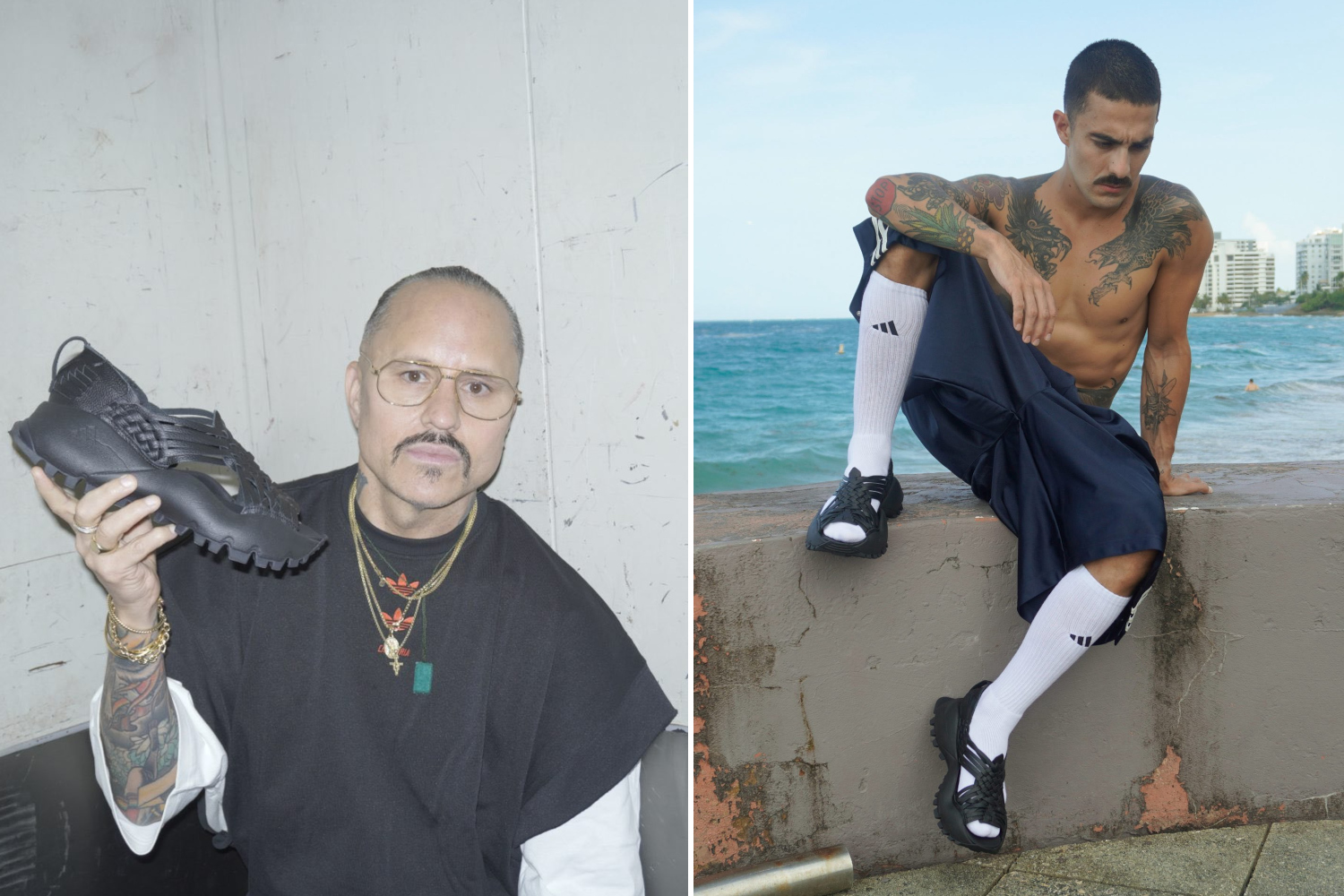Adidas apologizes for Oaxaca Slip-On controversy after accusations of copying Mexican huaraches. Company removes products, offers compensation.

@4ngelVazquez/X
Table of contents
The German sportswear giant Adidas finds itself embroiled in an international controversy that strikes at the heart of cultural sensitivity in modern fashion. The company’s Oaxaca Slip-On model has been accused of copying the design of traditional huaraches, handcrafted sandals that have been made for generations by the indigenous community of Villa Hidalgo Yalalag in Mexico.
What started as a collaboration between Adidas and American designer Willy Chavarria—who attempted to blend Mexican cultural elements with contemporary urban aesthetics—has evolved into a complex debate about cultural appropriation that has captured the attention of politicians and cultural institutions across Mexico. The controversy highlights a growing global conversation about how multinational corporations engage with traditional craftsmanship, particularly when profits are involved.
Political Backlash Intensifies
The criticism hasn’t remained confined to social media discussions. Deputy Isaías Carranza Secundino, a member of the Culture and Arts Commission of the Oaxaca Congress, publicly denounced what he termed “the improper use of traditional design.” He characterized the Adidas-Chavarria initiative as a clear violation of indigenous collective rights—strong language that reflects the deep cultural wounds that such controversies can inflict.
The institutional response has been swift and coordinated. The Ministry of Culture of the State of Oaxaca emphasized the critical importance of obtaining consent from local communities before using cultural elements for commercial purposes. This isn’t merely a matter of legal compliance; it’s about respect for centuries-old traditions that form the backbone of indigenous identity.
Perhaps most significantly, Mexican President Claudia Sheinbaum weighed in on the matter, stating that collective intellectual property must be respected and that compensation should be provided in cases of cultural plagiarism. When a sitting president addresses a fashion controversy, you know it has transcended typical commercial disputes.
Van contra Adidas por expropiación cultural de huaraches tradicionales: Gobierno de Oaxaca y Comunidad Yalalteca La…
Posted by Códices Oaxaca on Tuesday, August 5, 2025
Adidas Attempts Damage Control
Recognizing the gravity of the situation, Adidas moved quickly to address the controversy. Karen González, head of Adidas Mexico, participated in a ceremony in the Villa Hidalgo Yalalag community, where artisans demonstrated their traditional huaraches accompanied by local music and dances. It was a gesture that attempted to bridge corporate responsibility with cultural authenticity—though whether it was too little, too late remained to be seen.
González’s statement was carefully crafted: “We understand that this situation may have caused dissatisfaction and therefore we publicly apologize.” More importantly, she announced that the company would collaborate with the community for future models, respecting local culture and valuing craftsmanship as a source of livelihood. This commitment suggests a potential shift in how Adidas approaches cultural inspiration in its design process.
The company’s response went beyond words. Promotional images of the Oaxaca Slip-On were removed from official Adidas accounts and those of designer Chavarria, while online sales of the model were suspended. These actions speak louder than apologies—they represent tangible financial consequences for the misstep.
Financial Restitution on the Table
Beyond the immediate damage control, Adidas has initiated discussions with local authorities to define possible financial compensation for the affected artisans. This approach recognizes and aims to protect the collective intellectual property of the indigenous community—a concept that doesn’t always translate neatly into Western legal frameworks but is nonetheless crucial for cultural preservation.
The compensation discussions represent a fascinating intersection of traditional craftsmanship and modern intellectual property law. Unlike individual patents or trademarks, indigenous designs often belong to entire communities and have been passed down through generations without formal legal protection. This makes determining appropriate compensation both complex and essential.
A Broader Conversation About Cultural Respect
This episode illuminates the importance of a collaborative and respectful approach in fashion and design when drawing from cultural traditions. It’s not enough for global brands to simply take inspiration from traditional designs; they must engage meaningfully with the communities that created and preserved these cultural elements.
Adidas has promised to consult with local communities for future projects, potentially transforming this controversy into an opportunity to create ethical and sustainable models that unite innovation with the valorization of Mexican cultural heritage. Whether this commitment proves lasting remains to be seen, but it sets an important precedent for how multinational corporations might approach cultural collaboration in the future.
The controversy also reflects broader questions about globalization and cultural ownership. In an interconnected world where design inspiration can travel instantly across continents, the line between appreciation and appropriation becomes increasingly important to define. The Adidas case may well become a textbook example of how not to engage with traditional cultures—and hopefully, how to do better in the future.
Source: El Pais Mexico
